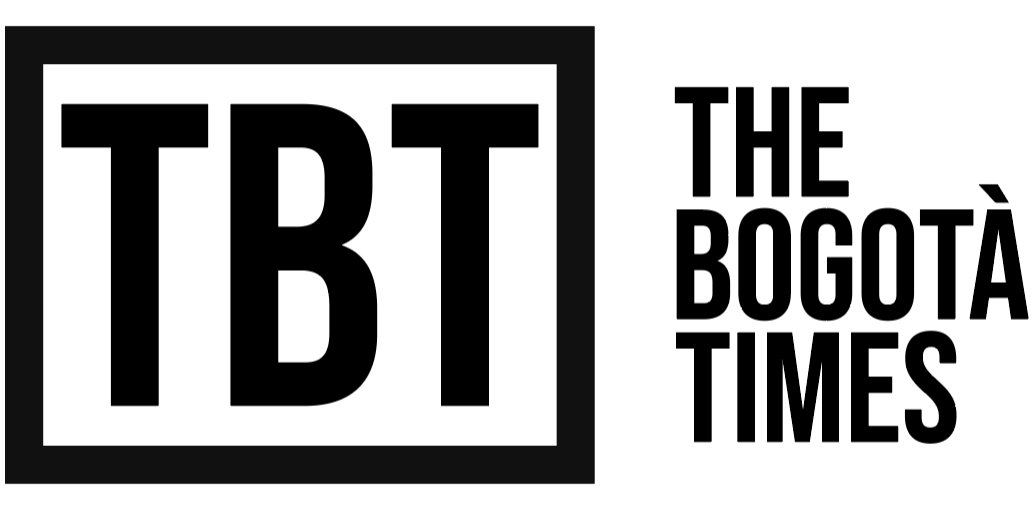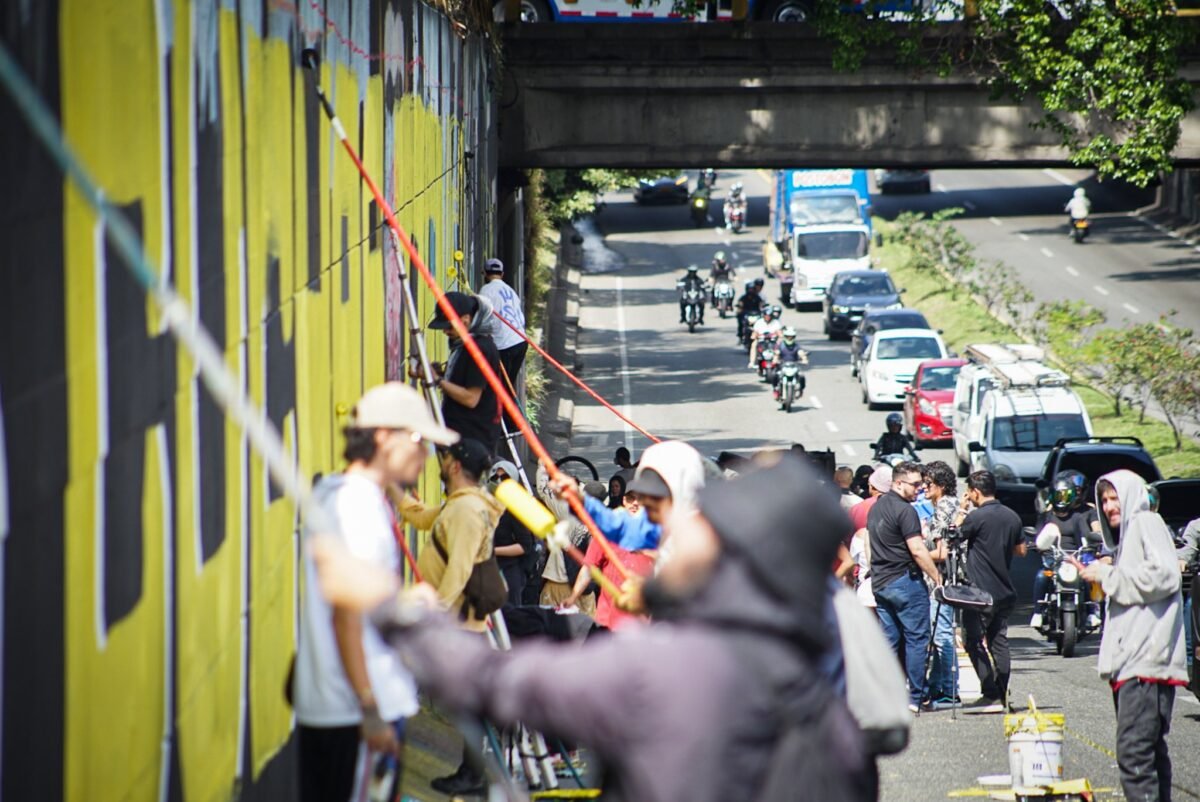In Medellín’s Comuna 13, the phrase “Las cuchas tenían razón” (“The elders were right”) has become a poignant symbol of resilience and justice. This graffiti, now a point of contention, commemorates the tragic events of Operation Orion in 2002, when state forces and paramilitaries executed a violent crackdown, leaving a lasting scar on the community and its people.
“Las cuchas tenían razón” – Remembering Operation Orion and the Fight for Truth in Medellín
In Medellín’s Comuna 13, the phrase “Las cuchas tenían razón” (“The elders were right”) has become a poignant symbol of resilience and justice. This graffiti, now a point of contention, commemorates the tragic events of Operation Orion in 2002, when state forces and paramilitaries executed a violent crackdown, leaving a lasting scar on the community and its people.
Operation Orion: A Legacy of Violence
Operation Orion was a military operation launched to regain control of Comuna 13 from guerrilla groups. With over 1,000 soldiers, helicopters, and the collaboration of paramilitary forces, the operation brought terror to the district. The aftermath was devastating: between 200 and 300 people disappeared, many believed to be buried in La Escombrera, a hillside dump that remains a grim symbol of Colombia’s conflict.
For residents like Margarita Selene Restrepo, Operation Orion is not just history—it’s personal. Margarita’s 17-year-old daughter, Carol Vanessa Restrepo, disappeared during the operation. Margarita believes her daughter’s remains lie in La Escombrera, a site that, for decades, has been a dumping ground for not only construction debris but also, allegedly, human remains.
“Las cuchas tenían razón” – Remembering Operation Orion and the Fight for Truth in Medellín
In Medellín’s Comuna 13, the phrase “Las cuchas tenían razón” (“The elders were right”) has become a poignant symbol of resilience and justice. This graffiti, now a point of contention, commemorates the tragic events of Operation Orion in 2002, when state forces and paramilitaries executed a violent crackdown, leaving a lasting scar on the community and its people.
Operation Orion: A Legacy of Violence
Operation Orion was a military operation launched to regain control of Comuna 13 from guerrilla groups. With over 1,000 soldiers, helicopters, and the collaboration of paramilitary forces, the operation brought terror to the district. The aftermath was devastating: between 200 and 300 people disappeared, many believed to be buried in La Escombrera, a hillside dump that remains a grim symbol of Colombia’s conflict.
For residents like Margarita Selene Restrepo, Operation Orion is not just history—it’s personal. Margarita’s 17-year-old daughter, Carol Vanessa Restrepo, disappeared during the operation. Margarita believes her daughter’s remains lie in La Escombrera, a site that, for decades, has been a dumping ground for not only construction debris but also, allegedly, human remains.
La Escombrera: A Silent Witness
La Escombrera looms over Comuna 13 as a constant reminder of the atrocities committed. The site has been used for years to dispose of bodies, making it a focal point for families seeking closure. Despite demands from families of the disappeared, systematic excavations only recently began, spurred by testimonies from former paramilitaries like “Móvil 8,” who identified potential burial sites.
Margarita’s daily vigil over La Escombrera reflects the desperation and hope of many families. “If she’s there, she’s close, but at the same time, very far away,” Margarita told the BBC. She continues to fight for the exhumation of the site to uncover the truth.

“Las cuchas tenían razón”: Graffiti as Resistance
Amid this struggle, graffiti has become a powerful tool for memory and resistance. The mural with the phrase “Las cuchas tenían razón” featured the faces of women like Margarita, who have led the fight for justice. The mural also included an image of former president Álvaro Uribe, alongside the haunting phrase, “Yo di la orden” (“I gave the order”), a direct accusation of state complicity.
The removal of this mural sparked outrage among activists and residents, who saw it as an attempt to silence the voices of victims. Artists have since reconstructed the mural, emphasizing its role in preserving memory and demanding justice.
“Las cuchas tenían razón” – Remembering Operation Orion and the Fight for Truth in Medellín
In Medellín’s Comuna 13, the phrase “Las cuchas tenían razón” (“The elders were right”) has become a poignant symbol of resilience and justice. This graffiti, now a point of contention, commemorates the tragic events of Operation Orion in 2002, when state forces and paramilitaries executed a violent crackdown, leaving a lasting scar on the community and its people.
Operation Orion: A Legacy of Violence
Operation Orion was a military operation launched to regain control of Comuna 13 from guerrilla groups. With over 1,000 soldiers, helicopters, and the collaboration of paramilitary forces, the operation brought terror to the district. The aftermath was devastating: between 200 and 300 people disappeared, many believed to be buried in La Escombrera, a hillside dump that remains a grim symbol of Colombia’s conflict.
For residents like Margarita Selene Restrepo, Operation Orion is not just history—it’s personal. Margarita’s 17-year-old daughter, Carol Vanessa Restrepo, disappeared during the operation. Margarita believes her daughter’s remains lie in La Escombrera, a site that, for decades, has been a dumping ground for not only construction debris but also, allegedly, human remains.
La Escombrera: A Silent Witness
La Escombrera looms over Comuna 13 as a constant reminder of the atrocities committed. The site has been used for years to dispose of bodies, making it a focal point for families seeking closure. Despite demands from families of the disappeared, systematic excavations only recently began, spurred by testimonies from former paramilitaries like “Móvil 8,” who identified potential burial sites.
Margarita’s daily vigil over La Escombrera reflects the desperation and hope of many families. “If she’s there, she’s close, but at the same time, very far away,” Margarita told the BBC. She continues to fight for the exhumation of the site to uncover the truth.
“Las cuchas tenían razón”: Graffiti as Resistance
Amid this struggle, graffiti has become a powerful tool for memory and resistance. The mural with the phrase “Las cuchas tenían razón” featured the faces of women like Margarita, who have led the fight for justice. The mural also included an image of former president Álvaro Uribe, alongside the haunting phrase, “Yo di la orden” (“I gave the order”), a direct accusation of state complicity.
The removal of this mural sparked outrage among activists and residents, who saw it as an attempt to silence the voices of victims. Artists have since reconstructed the mural, emphasizing its role in preserving memory and demanding justice.
Decades of Struggle for Truth
The fight for excavation and accountability continues. The families of the disappeared argue that La Escombrera holds not only bodies but the truth of the violence inflicted upon Comuna 13. However, political and logistical challenges have hindered progress, leaving many families in limbo.
For Margarita and others, the graffiti and their advocacy serve as both remembrance and resistance. “We are the voice of those who cannot speak,” Margarita said. The mural, far from just art, is a testimony to the pain, resilience, and courage of a community determined to uncover its past.
Conclusion: Memory and Justice
The story of “Las cuchas tenían razón” intertwines with the tragic history of Operation Orion, highlighting the enduring scars of violence in Medellín. Through graffiti, community activism, and relentless advocacy, Comuna 13 continues to fight for truth and recognition. The mural is more than an image—it is a promise that the memories of those lost will not be erased, and their stories will not be forgotten.
Source BBC

